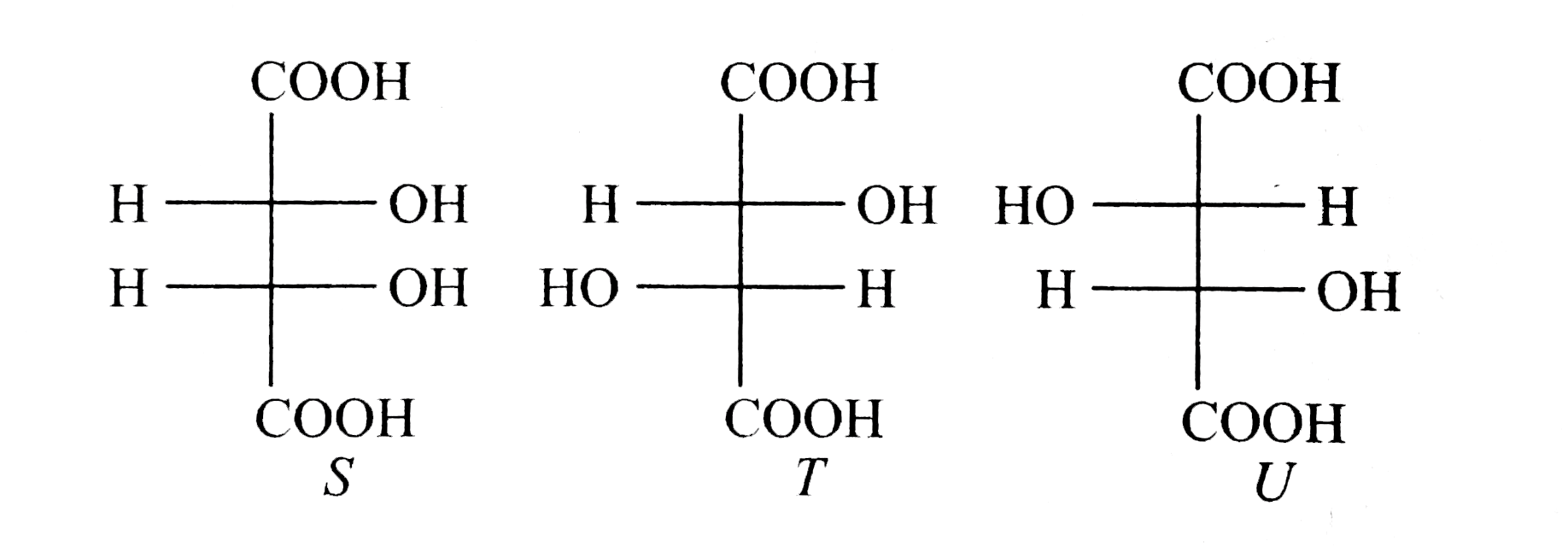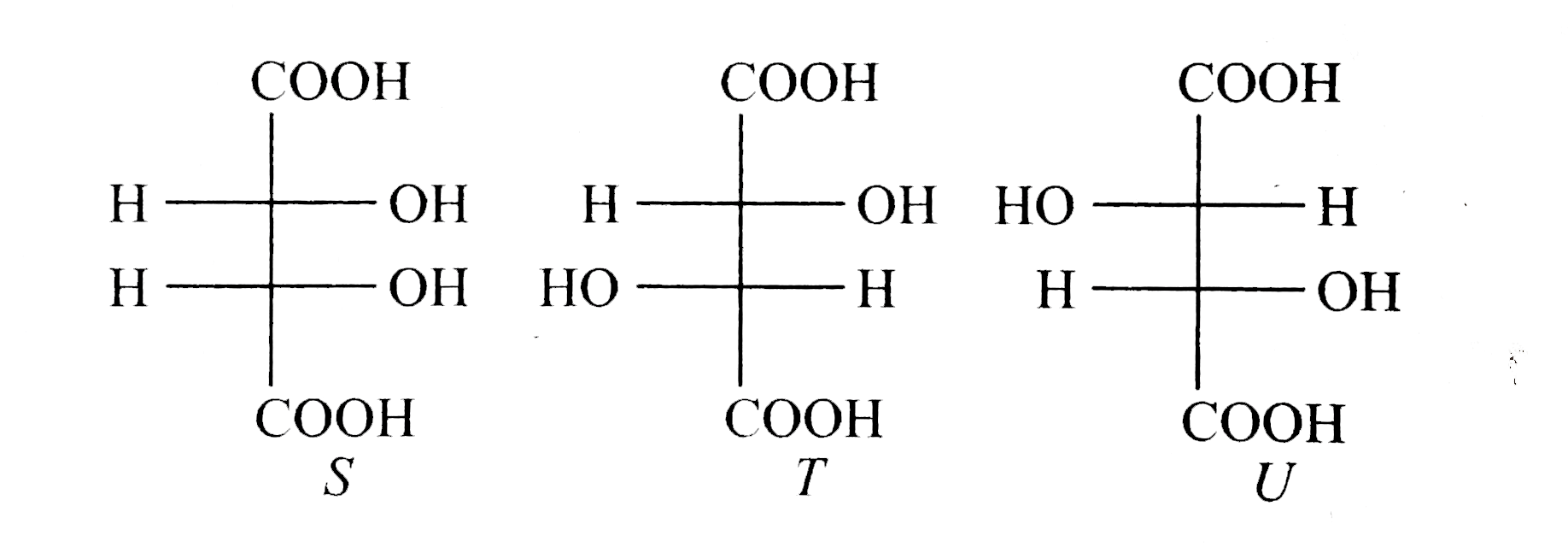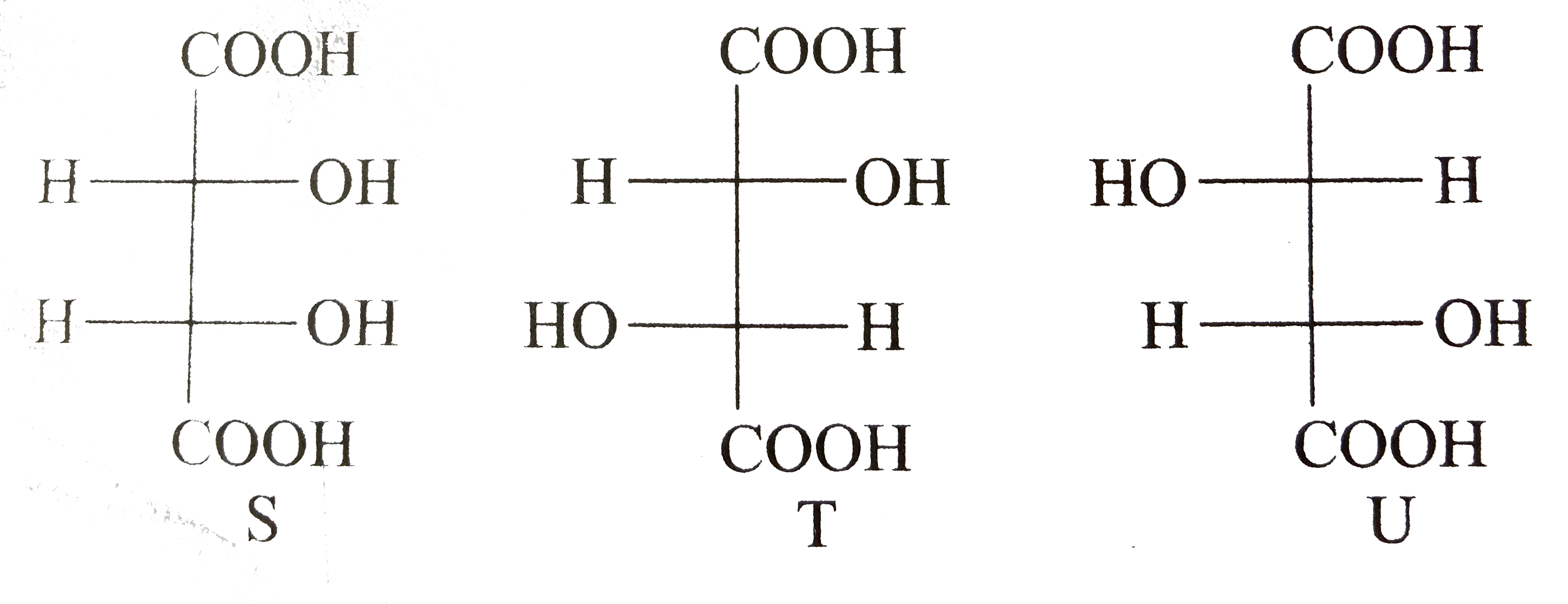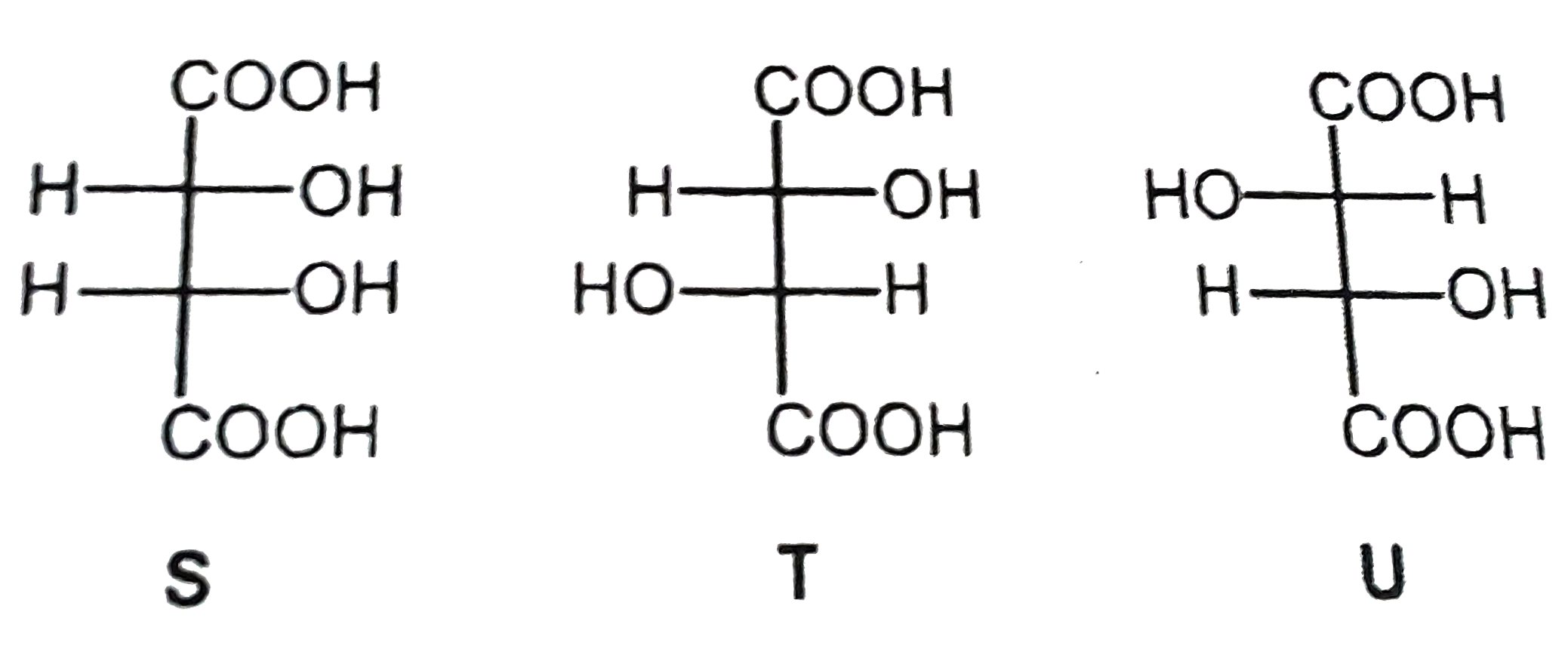P and Q are isomer of dicraboxylic acid C4H4O4 Both decolourixe Br2/H2O. On heating , P forms the cyclic anhydride. Upon treatment with duilute alkaline KMnO4. P as well a Q could produce one or more than one from S,T and U.

Compounds formed P and Q are, respectively
Optically active S and optically active pair (T.U)
Optically inacthive S and optically inactive pair (T.U)
Opticaly active pair (Y.U) and optically active S
Optically inactive pair (T.U) and optically inactives S
The correct Answer is:B
Step by step video, text & image solution for P and Q are isomer of dicraboxylic acid C_(4)H_(4)O_(4) Both decolourixe Br_(2)//H_(2)O. On heating , P forms the cyclic anhydride. Upon treatment with duilute alkaline KMnO_(4). P as well a Q could produce one or more than one from S,T and U. Compounds formed P and Q are, respectively by Chemistry experts to help you in doubts & scoring excellent marks in Class 12 exams.
Updated on:21/07/2023Topper's Solved these Questions
- CARBOXYLIC ACID AND THEIR DERIVATIVESBOOK - IIT-JEE PREVIOUS YEAR (CHEMISTRY)CHAPTER - CARBOXYLIC ACID AND THEIR DERIVATIVESEXERCISE - (Topic II) OBJECTIVE QUASTION
1 Videos
- CARBOXYLIC ACID AND THEIR DERIVATIVESBOOK - IIT-JEE PREVIOUS YEAR (CHEMISTRY)CHAPTER - CARBOXYLIC ACID AND THEIR DERIVATIVESEXERCISE - Subjective Questions
4 Videos
- CARBOXYLIC ACID AND THEIR DERIVATIVESBOOK - IIT-JEE PREVIOUS YEAR (CHEMISTRY)CHAPTER - CARBOXYLIC ACID AND THEIR DERIVATIVESEXERCISE - CHAPTER TEST
3 Videos
- BIOMOLECULES AND CHEMISTRY IN DAILY LIFEBOOK - IIT-JEE PREVIOUS YEAR (CHEMISTRY)CHAPTER - BIOMOLECULES AND CHEMISTRY IN DAILY LIFEEXERCISE - Chapter Test
9 Videos
- CHEMICAL AND IONIC EQUILIBRIUMBOOK - IIT-JEE PREVIOUS YEAR (CHEMISTRY)CHAPTER - CHEMICAL AND IONIC EQUILIBRIUMEXERCISE - INTEGER_TYPE
1 Videos
Similar Questions
H4P2O7Heat−−→
View SolutionP and Q are isomer of dicraboxylic acid C4H4O4 Both decolourixe Br2/H2O. On heating , P forms the cyclic anhydride. Upon treatment with duilute alkaline KMnO4. P as well a Q could produce one or more than one from S,T and U.

In the following reaction sequences V and W are respectively
QH2/Ni−−−→ΔV

View Solution
Knowledge Check
P and Q are isomers of dicarboxylic acid C4H4O4. Bothdecolorize Br2/H2O. On heating, P forms the cyclic anhydride. Upon treatment with dilute alkaline KMnO4,P as well as Q could produce one or more than one forms S,T and U.
 Compounds formed from P and Q are, respectivelyAoptically inactive pair (T,U) and optically inactive SBoptically active pair (T,U) and optically active SCoptically inactive S and optically inactive pair (T,U)Doptically active S and optically inactive pair (T,U)
Compounds formed from P and Q are, respectivelyAoptically inactive pair (T,U) and optically inactive SBoptically active pair (T,U) and optically active SCoptically inactive S and optically inactive pair (T,U)Doptically active S and optically inactive pair (T,U)P and Q are isomers of dicarboxylic acid C4H4O4. Both decolorize Br2/H2O. On heating, P forms the cyclic anydride.
Upon treatment with dilute alkaline KMnO4, p as well as Q could produce one or more than one from the S,T and U

Compounds formed from P and Q are, respectively:AOptically active S and optically active pair (T,U)Boptically inactive S and optically inactive pair (T,U)COptically active pair (T,U) and optically active SDOptically inactive pair (T,U) and optically inactive SP and Q are isomers of dicarboxyhc acid C4H4O4 .Both decolourize Br2/H2O On heating, P forms the cyclic anhydride.
Upon treatment with dilute alkaline KMnO4, P ass well as Q could produce one or more than one from S. T and U.

Compounds formed form P and Q are, respectively.AOptically active s and optically active pair (T,U)BOptically active S and optically inactive pair (T,U)COptcally actve pair (T. U) and optically active SDOptically inactive pair (T. U) and optically inactive S
P and Q are isomers of dicarboxylic acid C4H4O4. Both decolorize Br2/H2O. On heating, P forms the cyclic anydride.
Upon treatment with dilute alkaline KMnO4, p as well as Q could produce one or more than one from the S,T and U

In the following reaction, sequences V and W are respectively.

View Solution[P] on treatment with H2CrO4 in acetone produced [Q]. [Q] compound upon heating give rise to Acetophenone. The compound [P] is:
View SolutionKMnO4 on treatment with conc. H2SO4 forms a compound (X) which decomposes explosively on heating forming (Y). The (X) and (Y) are respectively :
View SolutionThe oxidation states of P in H4P2O5,H4P2O6 and H2P2O7 are respectively
View SolutionA substance (P) releases a gas (Q) on reaction with H2O. (Q) decolourises Br2 water. (P) may be
View Solution
